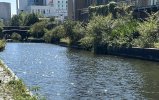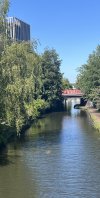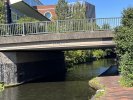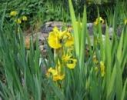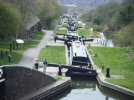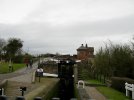-
Welcome to this forum . We are a worldwide group with a common interest in Birmingham and its history. While here, please follow a few simple rules. We ask that you respect other members, thank those who have helped you and please keep your contributions on-topic with the thread.
We do hope you enjoy your visit. BHF Admin Team
You are using an out of date browser. It may not display this or other websites correctly.
You should upgrade or use an alternative browser.
You should upgrade or use an alternative browser.
Covroad
master brummie
A link to an audio tour of the canals of Birmingham , Source Rivers and Canals Trust

 audioboom.com
audioboom.com
Audio Tours: Birmingham
Welcome to our audio tour of the the heart of Britain's canals in Birmingham. Together we’ll walk from Salvage Turn to the Roundhouse. and take you back in time to when the canal network in Birmingham was a hub of industrial activity.
Pedrocut
Master Barmmie
The multi-layered piece, named Black British History is British History, was defaced after it was unveiled on May 13 next to the Soho Loop Canal in Winson Green, Birmingham.
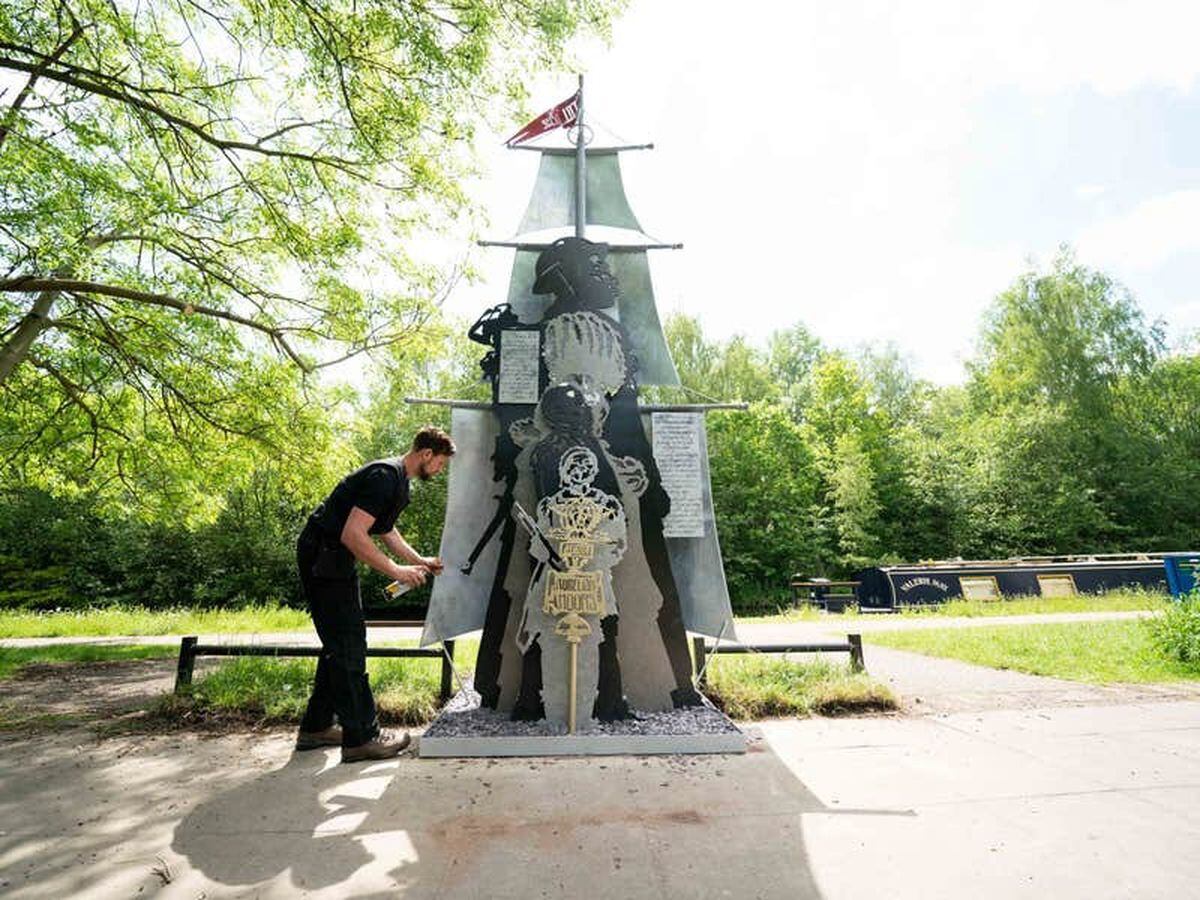
 guernseypress.com
guernseypress.com

Artists defiant after black history sculpture defaced days after being unveiled
The racist graffiti was removed by hand in just a few minutes.
Richard Dye
master brummie
Is that a recent photo? Very nice.A picture of the Digbeth branch canal taken from the tow path looking towards the town, on a sunny day it is nice to see the canals and the greenery on the canal side.
Covroad
master brummie
Taken yesterday (10th) , have a few more of Birmingham will post them later.Is that a recent photo? Very nice.
Radiorails
master brummie
That what a recreational canal looks like rather than an in industrial one.A picture of the Digbeth branch canal taken from the tow path looking towards the town, on a sunny day it is nice to see the canals and the greenery on the canal side.
Richard Dye
master brummie
Thank you, very beautiful!Taken yesterday (10th) , have a few more of Birmingham will post them later.
Covroad
master brummie
hello, the attached link shows the route of the canal, the picture I took show the view from the Aston University campus (Faraday Wharf)That what a recreational canal looks like rather than an in industrial one.

Map of the Digbeth Branch of the Birmingham & Fazeley Canal
A map of the Digbeth Branch of the Birmingham & Fazeley Canal displaying locks, winding holes and various services available along the length of the waterway.
Source: UK Waterways guide
Lloyd
master brummie
Nature always finds its way back, unless there is regular maintenance. Is the greenery on the far bank covering a towpath?A picture of the Digbeth branch canal taken from the tow path looking towards the town, on a sunny day it is nice to see the canals and the greenery on the canal side.
Richard Dye
master brummie
Yes, nature has a way of continually trying to reclaim there’s!Nature always finds its way back, unless there is regular maintenance. Is the greenery on the far bank covering a towpath?
Radiorails
master brummie
That is how I remember the Stratford Canal. Beautiful spots and close to the North Warks. railway line in places. I spent many hours of my youth there especially during school holidays.
Heartland
master brummie
Defaced sculpture on the Soho Loop. There is nothing wrong with promoting all aspects of history and it is sad that those that daub graffiti along the towpath do so with impunity, it would seem.
The Soho Loop is part of the original Birmingham Canal and first saw traffic in November 1769, now approaching 254 years ago. The principal traffic was coal from the coal mines at Wednesbury. This is also an area once known as Birmingham Heath and the canal followed the contours of the land to reach the terminus some yards beyond the present Flapper Public House.
Celebrations of its history could reflect the working canal boatmen and the later industry that developed such as the glassworks and the Soho Foundry where aspects include the industrialists who promoted the waterway and the men and women who worked on the canal and in the industries beside the canal.
Celebrating a selective history is perhaps not the best interpretation, however.
The Soho Loop is part of the original Birmingham Canal and first saw traffic in November 1769, now approaching 254 years ago. The principal traffic was coal from the coal mines at Wednesbury. This is also an area once known as Birmingham Heath and the canal followed the contours of the land to reach the terminus some yards beyond the present Flapper Public House.
Celebrations of its history could reflect the working canal boatmen and the later industry that developed such as the glassworks and the Soho Foundry where aspects include the industrialists who promoted the waterway and the men and women who worked on the canal and in the industries beside the canal.
Celebrating a selective history is perhaps not the best interpretation, however.
Pedrocut
Master Barmmie
‘Although the area is Dunstall, the plate on [Bridge] No.63 is inscribed ‘Tunstall Water Bridge’. It is tempting to blame the error on an apprentice pattern maker, but ‘Tunstall’ appears on the 1st edition Ordnance Survey of 1834’ (1974, J. Ian Langford, Towing Path Guide No.1: Staffordshire and Worcestershire Canal).
A response by Julien Souter in the Autumn Blackcountryman Magazine sheds more info on the Dunstall Water Bridge. Studying the day books of the under clerk of works for the construction (1766-72) the bridge is referred to as Tunstall approx 20 times. Tunstall is also used in the General History of Inland Navigation (late 1700s)
He also says that Christine Richardson, in her biography James Brindley Canal Pioneer, states that Brindley was engaged in work on the Flint mill at Tunstall, Burslem in 1757.
Heartland
master brummie
Yes, when the microfilms are read in the diaries there are various spellings that link the Waterbridge to the nearby place Dunstall Hll and those spellings of the place vary, and the writing can have more than one interpretation in Green's hand writing.
I copied one case as "Turnstaff" and others of Turnstall, but the fact remains that the house was called Dunstall and that was where the racecourse was before it was moved to the present location.
John Langford was concerned enough to make the case for Dunstall instead of Tunstall and why a connection should be made with Tunstall. near Stoke, should be made is not the best comparison. James Brindleys, Trent & Mersey Canal was started near Tunstall and that place was, and is, on that canal navigation, and making an association with a water-powered flint mill is equally obscure.
That Dunstall was also called Tunstall on an Ordnance Survey map is more relevant, but those that conducted that survey were they influenced by the dialect?
I copied one case as "Turnstaff" and others of Turnstall, but the fact remains that the house was called Dunstall and that was where the racecourse was before it was moved to the present location.
John Langford was concerned enough to make the case for Dunstall instead of Tunstall and why a connection should be made with Tunstall. near Stoke, should be made is not the best comparison. James Brindleys, Trent & Mersey Canal was started near Tunstall and that place was, and is, on that canal navigation, and making an association with a water-powered flint mill is equally obscure.
That Dunstall was also called Tunstall on an Ordnance Survey map is more relevant, but those that conducted that survey were they influenced by the dialect?
Radiorails
master brummie
The Tunstall, which is a separate town to Burslem, not as quoted above, in the present City of Stoke-on-Trent. There were flint mills in the potteries, part of the process in pottery factories, but this has nothing, I feel, to the original Tunstall/Dunstall mentioned in this thread.
In around 1970 we took a boat down the Delph locks. It seems like the locks had not been used for some time and a passerby said we were the first boat he had seen for over a year.
There was a load of rubble behind the bottom lock gate so could not get the boat though. We had to leave it overnight.
The following day we called into the lock keepers’ cottage at Wolverly who had a long three pronged hook on a long pole. It used to be locked in a long steel tube outside his house. It had a nut on the top that fitted the lock key that kept it in secure.
After a lot of digging, scraping and swearing we manage to get the boat through. We then dropped the hook off one the way past Wolverley. I seem to recall we went up The Brach locks later that day too.
There was a load of rubble behind the bottom lock gate so could not get the boat though. We had to leave it overnight.
The following day we called into the lock keepers’ cottage at Wolverly who had a long three pronged hook on a long pole. It used to be locked in a long steel tube outside his house. It had a nut on the top that fitted the lock key that kept it in secure.
After a lot of digging, scraping and swearing we manage to get the boat through. We then dropped the hook off one the way past Wolverley. I seem to recall we went up The Brach locks later that day too.
It was all whitewashed when we used it.
Radiorails
master brummie
If you think the locks shown in the above photos are hard work then you should avoid those at Lapworth. It is worth it, however, as in my view the Stratford Canal is one of beauties best.
Bob Davis
Bob Davis
The pub at the bottom is called the tenth lockwow glad i have not got to wind that lot
Delph Locks or the Delph Nine Canal in Brierley Hill
View attachment 183779
Bob
Bob Davis
Bob Davis
Oh come on man up, try Tardebigge. 35 locks in all.If you think the locks shown in the above photos are hard work then you should avoid those at Lapworth. It is worth it, however, as in my view the Stratford Canal is one of beauties best.
Bob


